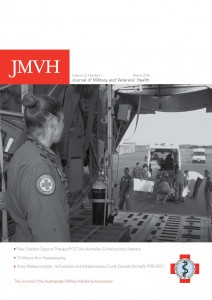LEGAL MEDICINE ASPECTS OF PRACTISING MEDICINE IN THE AUSTRALIAN DEFENCE FORCE (ADF) – A personal perspective
Introduction The practice of medicine in the ADF is becoming increasingly complicated by administrative requirements, Health Directives and Instructions, with better informed patients and by an increasing doctor liability for medical outcomes. Patients and lawyers perceive modern medicine to be an exact science and, consequently, expect positive outcomes and have reduced tolerance for adverse… Read more »




 Download the whole edition here.
Download the whole edition here.


